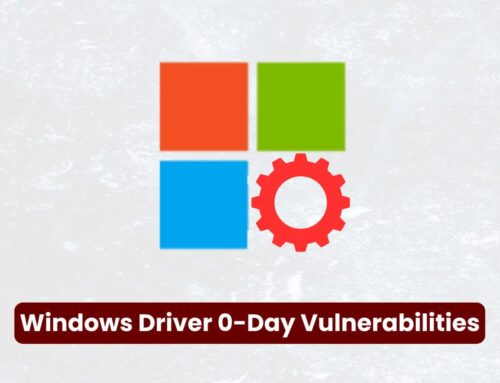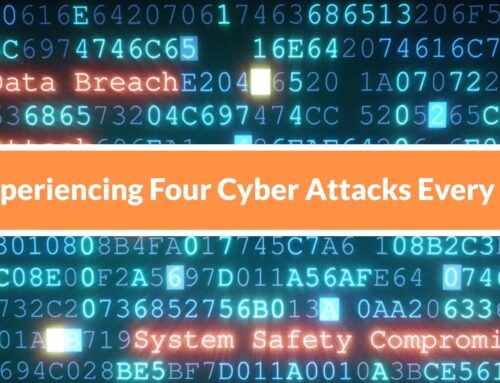
Chinese Companies Linked With Hackers Filed Patents Over 10+ Forensics and Intrusion Tools
The quiet realm of intellectual property, typically associated with innovation and commercial advantage, has taken a chilling turn in the cybersecurity landscape. A recent report from SentinelLABS reveals a disquieting truth: Chinese companies, demonstrably linked to state-sponsored hacking operations, have been filing patents for advanced forensics and intrusion tools. This isn’t merely about protecting legitimate R&D; it’s about formalizing and refining offensive cyber capabilities with a legal veneer. The implications for global cybersecurity, data privacy, and international relations are profound and demand immediate scrutiny.
The Patenting of Cyber Offensive Capabilities
Cybersecurity researchers at SentinelLABS have unearthed over 10 patents registered by Chinese entities that detail sophisticated, highly intrusive forensics and data collection technologies. These companies are not obscure start-ups; they are firms that have been explicitly named in recent U.S. Department of Justice indictments related to state-sponsored hacking activities. This suggests a concerted effort to legitimize and institutionalize methods typically employed by advanced persistent threat (APT) groups.
- Formalizing Offensive Tools: Patenting these technologies elevates their status from clandestine operations to formally recognized intellectual property. This could potentially allow for more overt development, testing, and even commercialization within certain parameters.
- Intrusive Forensics: The patents describe tools capable of deep system penetration, data exfiltration, and sophisticated methods of evading detection. This is a significant concern for any organization that might become a target.
- State-Sponsored Nexus: The direct links to entities implicated in state-sponsored attacks underscore a national strategy to build and protect a formidable cyber arsenal under the guise of intellectual property.
Unpacking the Sophistication: Encrypted Communications and Beyond
While the full detail of each patent remains proprietary, the information available indicates that these tools possess highly advanced capabilities, including the ability to handle and exploit encrypted communications. This is a critical area for intelligence gathering and offensive operations, as it allows attackers to bypass one of the fundamental layers of modern data protection.
The patents reportedly cover a wide array of functionalities:
- Encrypted Data Interception and Decryption: Tools designed to intercept, decode, and analyze data protected by encryption, potentially leveraging weaknesses in common cryptographic protocols or side-channel attacks.
- Advanced Persistent Compromise: Mechanisms for establishing and maintaining covert access to target systems over extended periods, often by sophisticated rootkits or evasion techniques.
- Data Exfiltration and Obfuscation: Methods for extracting large volumes of sensitive data without detection, often employing various data anonymization and network routing techniques.
- Forensic Evasion: Tools to meticulously erase traces of intrusion, making incident response and digital forensics significantly more challenging.
The Strategic Implications for Global Cybersecurity
The patenting of offensive cyber tools by state-linked entities carries severe implications for the global cybersecurity landscape. It transforms the nature of cyber warfare and espionage, moving it from purely covert operations to a more structured, legally protected domain.
- Dual-Use Technology Dilemma: While some forensic tools have legitimate defensive uses, their patenting by known state-sponsored actors strongly points towards offensive intent, exacerbating the dual-use technology problem.
- Escalation and Proliferation: This move could normalize the patenting of offensive cyber capabilities globally, potentially leading to an arms race in digital intellectual property and accelerating the proliferation of sophisticated tools.
- Legal and Ethical Quandaries: It raises complex legal and ethical questions about intellectual property rights in the context of cyber warfare and state-sponsored espionage. Can a nation genuinely claim ownership over tools designed to breach the sovereignty of others?
- Increased Risk to Critical Infrastructure and Businesses: With these tools being formalized and potentially refined through more open R&D channels (even if internal), the threat to global critical infrastructure, enterprises, and national security deepens.
Remediation Actions and Defensive Strategies
While this development highlights the evolving threat landscape, organizations and nation-states are not without recourse. Proactive and layered defensive strategies are more crucial than ever.
- Strengthen Incident Response and Forensics Capabilities: Investing in advanced incident response teams and forensic tools is paramount. Organizations need to be able to detect, analyze, and mitigate intrusions from sophisticated actors. This includes robust log management and analysis.
- Enhance Threat Intelligence Sharing: Collaborating on threat intelligence, particularly regarding state-sponsored activities, can help organizations anticipate and defend against emerging attack methodologies.
- Implement Multi-Layered Security Architectures: Relying on a single security solution is insufficient. Employing a layered defense approach, including strong authentication (MFA), network segmentation, endpoint detection and response (EDR), and application security, creates multiple hurdles for attackers.
- Regular Security Audits and Penetration Testing: Continuously assessing an organization’s security posture through independent audits and simulated attacks helps identify exploitable weaknesses before adversaries do.
- Zero Trust Architecture: Adopting a Zero Trust model, which assumes no implicit trust and verifies every access request, whether from inside or outside the network, can significantly reduce the attack surface.
- Patch Management and Vulnerability Management: Diligent and timely patching of all systems and applications, coupled with continuous vulnerability scanning, remains a foundational security practice. Be aware of critical vulnerabilities such as potential zero-days that these patented tools could exploit. Examples of recently disclosed critical vulnerabilities include CVE-2024-20359 (Cisco ASA/FTD unauthorized access) and CVE-2024-24919 (Check Point Quantum Gateway arbitrary code execution). While these specific CVEs are not directly related to the patents, general vigilance for such vulnerabilities is critical.
Conclusion
The patenting of offensive cyber capabilities by Chinese companies linked to state-sponsored hacking operations marks a significant and concerning shift in the geopolitical cyber arena. It underscores a strategic effort to formalize and refine tools designed for intrusion, data exfiltration, and espionage. This development not only elevates the sophistication of potential threats but also raises profound questions about the ethics and legality of intellectual property in the context of cyber warfare. For cybersecurity professionals, the message is clear: the threat landscape is evolving, demanding an even greater commitment to robust defenses, proactive intelligence gathering, and international collaboration to safeguard digital assets and national security.





